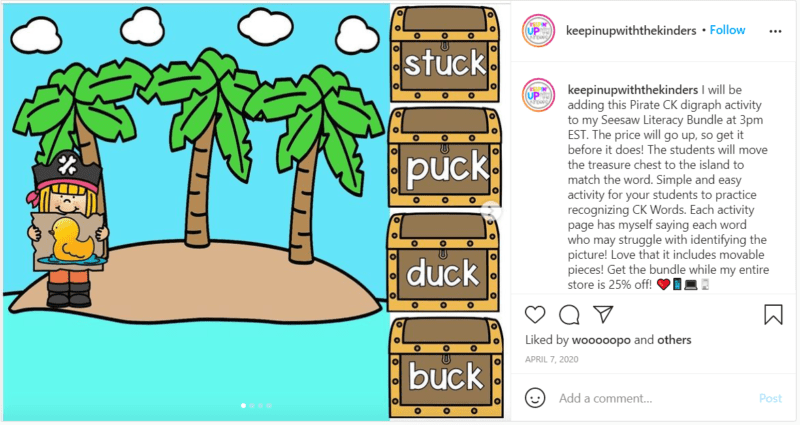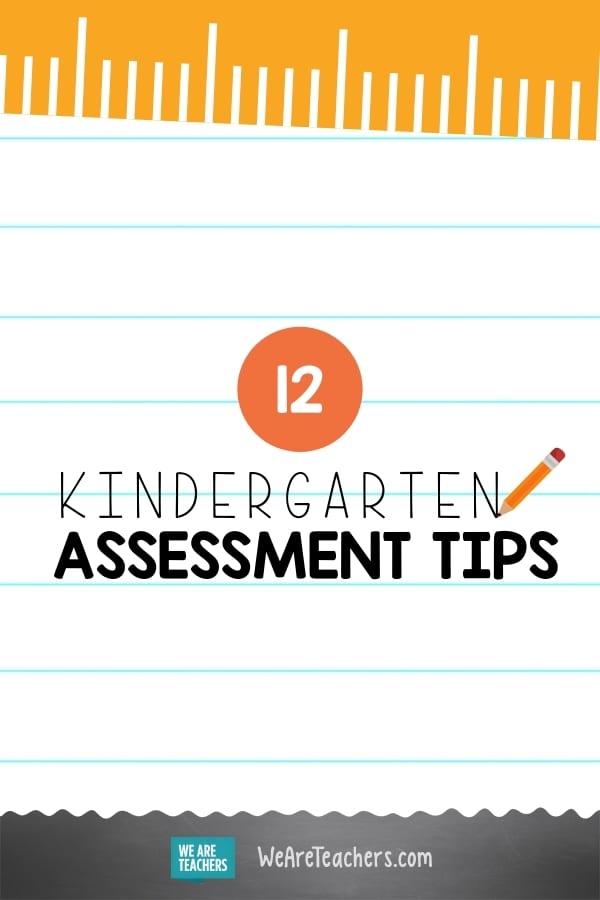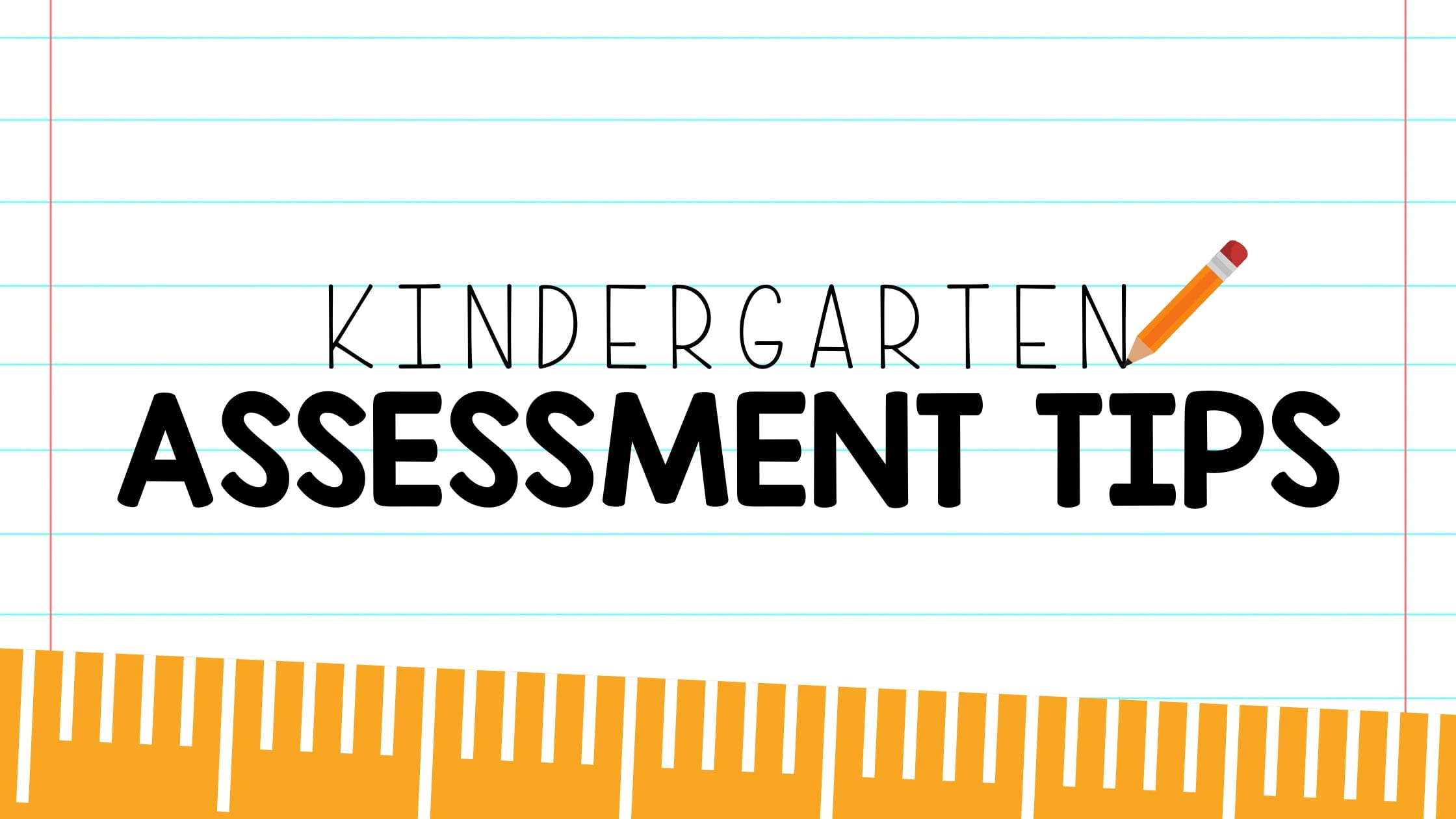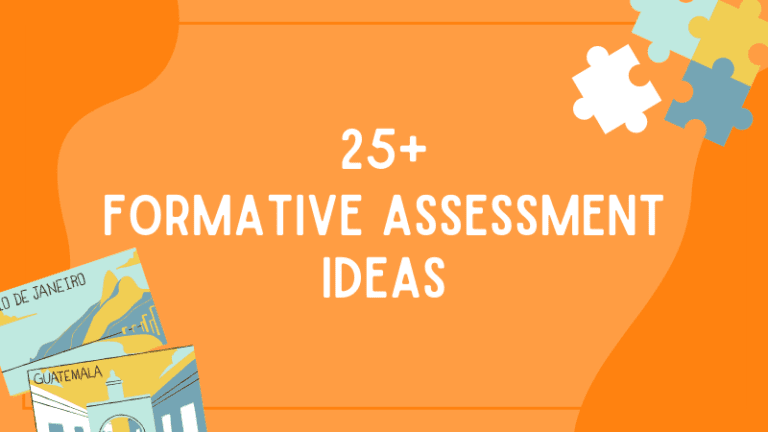Just like a chef tastes the soup in order to adjust the seasonings, effective teachers need to actively monitor their students’ understanding. It’s more than just testing their knowledge. Teachers need to ultimately adapt their teaching to suit students’ needs. You want all of your students to be successful, that’s why these kindergarten assessment ideas are so important. Teaching remote? Don’t worry, we’ve got ideas for remote learning assessments too!
Move It!
Gauge student learning while also giving your kindergartners an opportunity to move and wiggle.
1. Rocket Ship
After reading an assessment question and giving two to three possible answers, ask students to close their eyes. Repeat the question and ask students to stand as quietly as they can when they hear the answer they think is correct. Ask students to keep their eyes closed and stay standing until you say “Rocket launch!” Then everyone can open their eyes and jump like a rocket. While students are standing still with their eyes closed waiting to launch, it’s easy to take a few notes regarding individual student responses. Having students keep their eyes closed helps prevent peer influence.
2. Four Corners
Write possible answers on a whiteboard or use the letters A, B, C, and D to designate spaces in each corner of the room. Next, read out a question and ask students to move to the corner that corresponds to their answer. There are many ways to use this concept across the curriculum. For phonics instruction, the corners of the room could be labeled with phonemes the class is studying and students might have to listen for one of them in a word. For math, the corners could be labeled with different numbers as students practice recognizing numbers 1-100.
Not only does Four Corners get students up and moving, but the speed at which students move toward the correct answer can tell you a lot about how confident they are in their answers. Likewise, students who seem to be tagging along with other students are likely to need additional support in mastering the concept. If it seems like too many students are following others, have each student write down their answer before moving to the corner corresponding to their answer.
[contextly_auto_sidebar]
Show It!
Gestures or visuals allow you to get a quick read on student understanding. They make the perfect kindergarten assessment strategies for your toolbox.
3. Thumbs Up, Thumbs Down
Before continuing on with a lesson, ask students to hold up a thumbs up, thumbs down, or a sideways thumb to indicate how they feel about their level of understanding. It’s helpful to hang a sign or anchor chart in the classroom to remind students of what each sign means:
- Thumbs up = “I get it!” or “I can do it!”
- Thumbs down = “I don’t get it!” or “I need help!”
- Thumb to the side = “I kind of get it.” or “I could use some more practice.”
4. Sign Language
Teach your kindergartners how to sign the letters A, B, and C. Read a question aloud and give three possible answers, one for each letter. Ask students to wait to hear all responses. Now have students make the alphabet letter sign corresponding to the answer they chose. Instruct them to keep their letter sign in their lap until you call out “Eyes closed, letters up!” Once you’ve gauged the student responses, call out “Letters down and eyes on me!”
5. Color Cards
Give each student a set of three cards on a ring: one red, one yellow, and one green. Explain the meaning of each color card (listed below). As you teach a lesson, stop periodically to check in with students by asking them to show the colored card that reflects how they feel about their learning. Remind students that everyone learns at a different pace. As a community of learners, the goal is for everyone in the group to understand the lesson. It’s okay to show a red, yellow, or green card. Color cards can also be used during independent work time as a way for students to let their teacher know they need help. As the year progresses, invite students to support each other! Those who have green cards can help classmates displaying yellow and red cards.
- Red = “Stop, I need help.”
- Green = “Keep going, I understand.”
- Yellow = “I’m a little confused.”
Mark It!
These assessment ideas make use of written/drawn responses, making them perfect for quiet times in the classroom.
6. Exit Tickets
Like pop quizzes, but without the “pop”, adding exit tickets to your weekly routine is a quick way to track student progress. Many kindergarten exit ticket templates exist online or you can create your own. Exit tickets can also be used prior to a lesson to gauge how much your students already know and then given again afterward to record how their understanding has grown.

Source: K Teacher Tiff
7. Whiteboards
Give each student a small whiteboard and a marker. Ask students to draw or write their answers and then hold up their whiteboard. Scanning the room, it’s easy to see if students understand the material and which students need extra support.
Voice It!
Channel your students’ love of talking with these oral assessment ideas.
8. Pair and Share
Simple but effective! As students talk, move around the room to listen in on their conversations. Pair and shares can be used in a variety of ways including:
- Taking turns to explain the concept that was just covered in the lesson
- Asking a partner to share how they feel about their level of understanding and what questions they still have about the topic
- Discussing a question posed by the teacher
9. Musical Match Up
Play a short sample of music while students move about the room. When the music stops, have students talk to the person nearest to them about what they learned in the lesson. Repeat this twice to create new pairings. As students talk, move throughout the room to listen in on conversations and ask your own questions.
Kindergarten Assessment Ideas for Online Learning
Take advantage of these great online tools and simple video call assessment ideas to gauge student learning while teaching remotely.
10. Black Out
Technology can be complicated, but this assessment idea for video calls is not! Students simply cover the camera on their computer with their finger to indicate their response to a multiple-choice question. In a grid view, it’s very easy to see what percentage of the class understands the concept being covered and which students could use more support.
11. Kahoot
Assessments that feel like games are a stress-free way to learn more about what your students know. Using Kahoot as an assessment tool can be as simple as setting up a quick game of 10 questions for students to complete independently. As a class, Kahoot can be used to create a game show styled event. Students can respond via the chat window of their video conference platform or by writing their answer on paper and then holding it in front of the camera.
12. SeeSaw
Online learning platforms offer many easy ways to gather data on student learning through fun activities. Seesaw is a platform that works well with kindergartners and includes a library of thousands of activities for all subjects and levels.

Source: @keepinupwiththekinders
For even more great resources for teaching kindergarten online, check out: Your Guide to Teaching Kindergarten Online
What are your favorite kindergarten assessment ideas? Please share in the comments!
Plus, the best kindergarten anchor charts.


